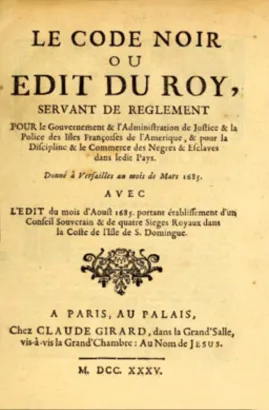First planned to prohibit the abuse and mistreatment of slaves on plantations and to suppress illegal trade between Africa and the West Indies, the Code Noir of 1685 became more of a text to regulate and institutionalize slavery. In 1724, the second version of the text made legal the practice of slavery.
The slaves from Africa lived in wooden huts on the vast estate owned by their master. They were considered property of their master and owed them unfailing dedication. While the men worked in the plantations, the women held domestic positions in the homes of wealthy landowners.
They were responsible for both household chores and the education of the children of the settlers. The masters were to baptize and instruct their slaves in the Catholic religion.
The Code Noir repressed births outside marriage between a slave woman and a free man. Slaves could marry each other, complain about ill-treatment, and build up a nest egg to redeem their freedom. An escape attempt was heavily penalized if the slave was subsequently found.
A slave could be traded or sold to another owner. Although several slave revolts took place in Martinique, none resulted in a change in the condition of these servile populations.
This system lasted for two centuries in Martinique before the abolition of slavery on the island was decreed on 22 May 1848.
